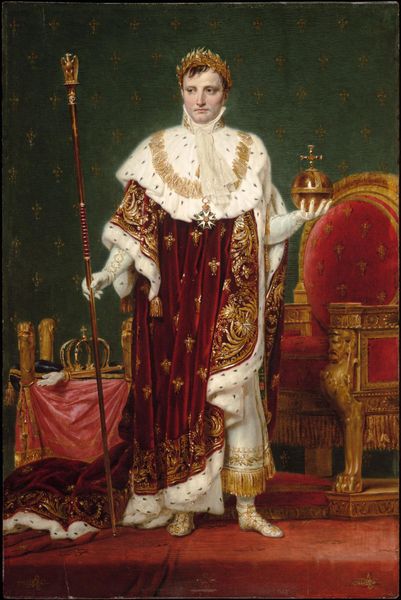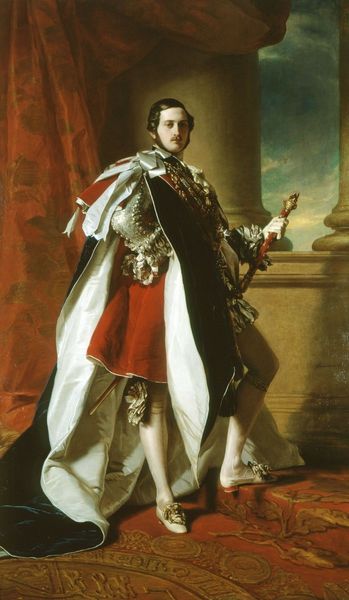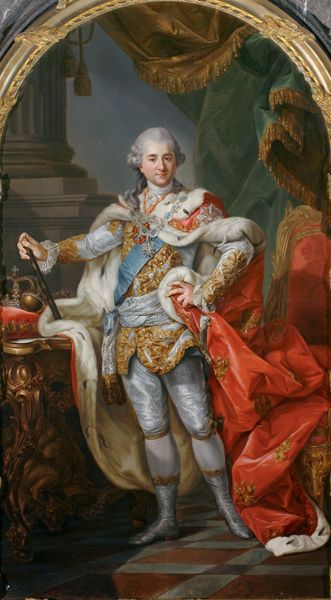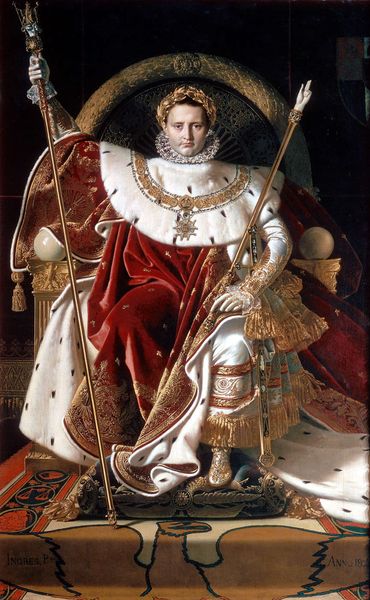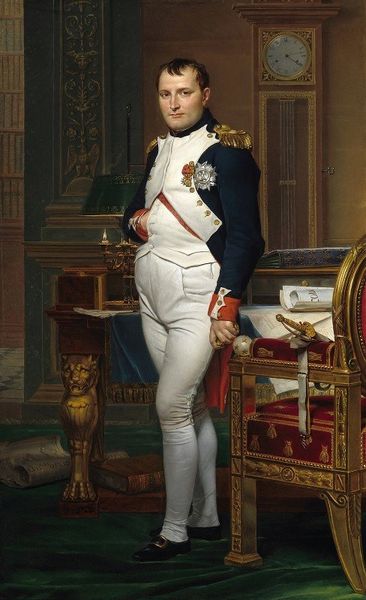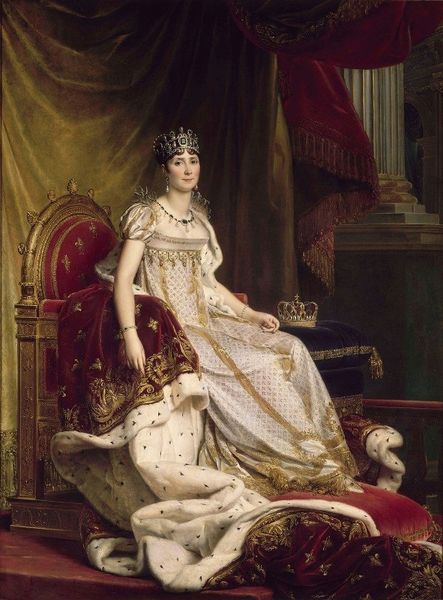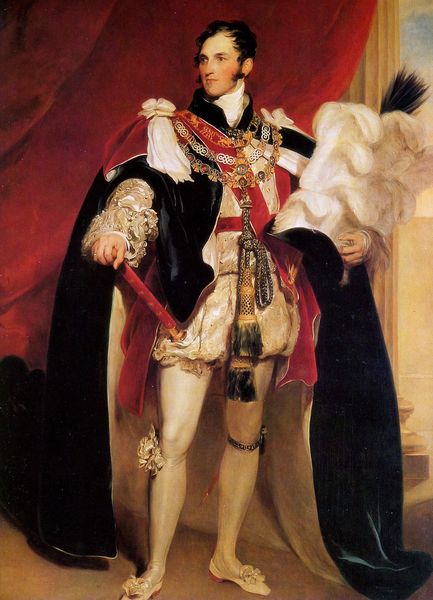
painting, oil-paint
#
portrait
#
figurative
#
neoclacissism
#
painting
#
oil-paint
#
romanticism
#
history-painting
Copyright: Public Domain: Artvee
François Gérard painted this portrait of Emperor Napoleon I using oil paint on canvas. But it’s not the paint, but rather the clothing depicted that I find most compelling. Consider the velvet robe, edged with ermine and embroidered with golden bees. Think of the labor involved in the cultivation of the silk, the weaving of the fabric, the dyeing and embellishment. Consider the fur trim – each pelt individually selected and sewn. The golden laurel crown. And the scepter – think of the mining and smelting of the gold. These are not just symbols of power, but potent reminders of the vast networks of labor and resources that fueled Napoleon’s empire. The accumulation of these opulent materials signifies power and status, but it also reveals how the emperor was inextricably linked to global systems of production and consumption. So, when you look at this portrait, remember that you are seeing not just an individual, but also a reflection of a complex social and economic order.
Comments
rijksmuseum about 2 years ago
⋮
After having seized power through a coup d’état in 1799, General Napoleon proclaimed himself emperor in 1804. In the meanwhile, he conquered large parts of Europe. The year 1812 was a turning point. His invasion of Russia failed and his forces lost the Battle of the Nations near Leipzig. In 1814 Napoleon was exiled to the island of Elba. He escaped, but was definitively defeated 100 days later at the Battle of Waterloo.
Join the conversation
Join millions of artists and users on Artera today and experience the ultimate creative platform.


